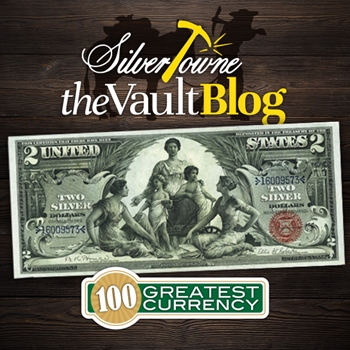
Displaying incredible engraving art and one of three currency notes in the top 11 of Whitman Publishing's 100 Greatest American Currency Notes, this next bill showcases the Victorian age at its finest. With help from authors Q. David Bowers and David M. Sundman, we will explore this next entry’s impact and how it came to be.
#11 – Science, Industry, and Commerce $2 “Educational Note,” Series of 1896
Three denominations of the Series of 1896 Silver Certificates have been placed in this top 100 list, one of which we have already covered in an earlier blog (#5). This $2 note, named Science Presenting Steam and Electricity to Industry and Commerce, features five allegorical figures on the face and was done by artist Edwin H. Blashfield. This original design was meant for the $50 denomination, but it was never issued and instead was adopted for the $2 bill.
Bringing forth the elegant and beautiful imagery of the Victorian era, the note features electricity in the forefront. In 1896, the nation was being wired for household and industrial power. The telephone was also gaining notoriety and Americans were looking forward to what this meant for them and the country.
The rest of the note and the back was designed by Thomas F. Morris who was a member of the Bureau of Engraving and Printing from November 1893 to 1898. The back features the portraits of Robert Fulton and Samuel F.B. Morse.
The historic market value of the $2 “Educational Note” in Gem Crisp Uncirculated condition was $275. By this publication (2006), it rose to $11,500. According to authors Bowers and Sundman, this note is readily available in almost any grade as an estimated number of 3,500-5,000 examples are known.







